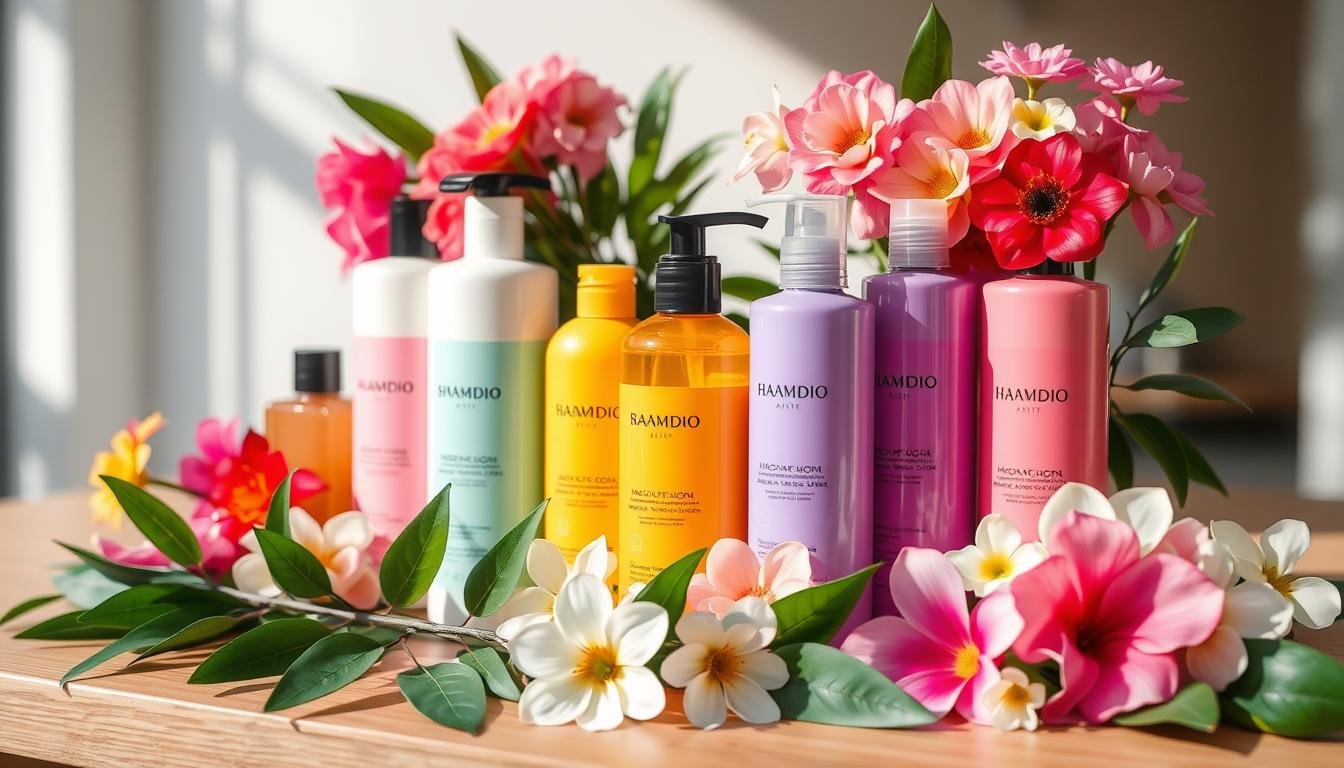How to Choose the Right Shampoo and Conditioner
Did you know that the global hair care market is estimated to be worth over $100 billion? With countless shampoos, conditioners, and styling products flooding the shelves, selecting the right hair care regimen can feel overwhelming. However, understanding your unique hair type, scalp condition, and desired benefits can help you make informed choices and achieve healthier, more vibrant locks.
In this comprehensive Guide, we’ll explore the factors to consider when choosing the perfect shampoo and conditioner for your hair. From deciphering hair textures and identifying common scalp issues to uncovering the benefits of essential ingredients, you’ll gain the knowledge to curate a personalized hair care routine that caters to your specific needs.
Key Takeaways
- The hair care market offers a wide range of products, including organic, Natural, sulfate-free, and paraben-free options.
- Factors like hair type, scalp condition, and lifestyle influence the choice of shampoo and conditioner.
- Ingredients such as Natural oils, proteins, and moisture-boosting agents play a crucial role in maintaining healthy hair.
- Selecting the right products for your hair’s specific needs is essential for achieving optimal results.
- Understanding the impact of environmental factors and seasonal changes on hair health can help you adapt your routine accordingly.
Understanding Your Hair Type
To find the right shampoo and conditioner for your hair, it’s essential to understand your unique hair type. This encompasses factors like hair texture, hair thickness, and hair porosity. Let’s dive deeper into each of these characteristics and how they can guide your hair care journey.
Identifying Your Hair Texture
Hair texture refers to the natural wave or curl pattern of your strands. There are four main hair textures:
- Straight Hair
- Wavy Hair
- Curly Hair
- Coily Hair
Identifying your hair texture can help you choose products that enhance your natural wave or curl, whether that means smoothing straight hair or defining curls.
Determining Hair Thickness
Hair thickness is categorized as fine, medium, or coarse. Fine hair may appear delicate and lightweight, while coarse hair feels thicker and more robust. Understanding your hair’s thickness can guide you towards formulas that provide the right level of nourishment and body.
Recognizing Hair Porosity
Hair porosity refers to your strands’ ability to absorb and retain moisture. There are three main levels of porosity:
- Low Porosity – Hair that is resistant to moisture absorption
- Medium Porosity – Hair that has a balanced moisture level
- High Porosity – Hair that readily absorbs and releases moisture
Knowing your hair’s porosity can help you choose products that address your specific moisture needs, whether that means lightweight, hydrating formulas or richer, more emollient ones.
Alongside these hair characteristics, it’s also important to consider your scalp type, which can range from oily and combination to dry. This can impact the shampoos and conditioners that will work best for your overall hair health.
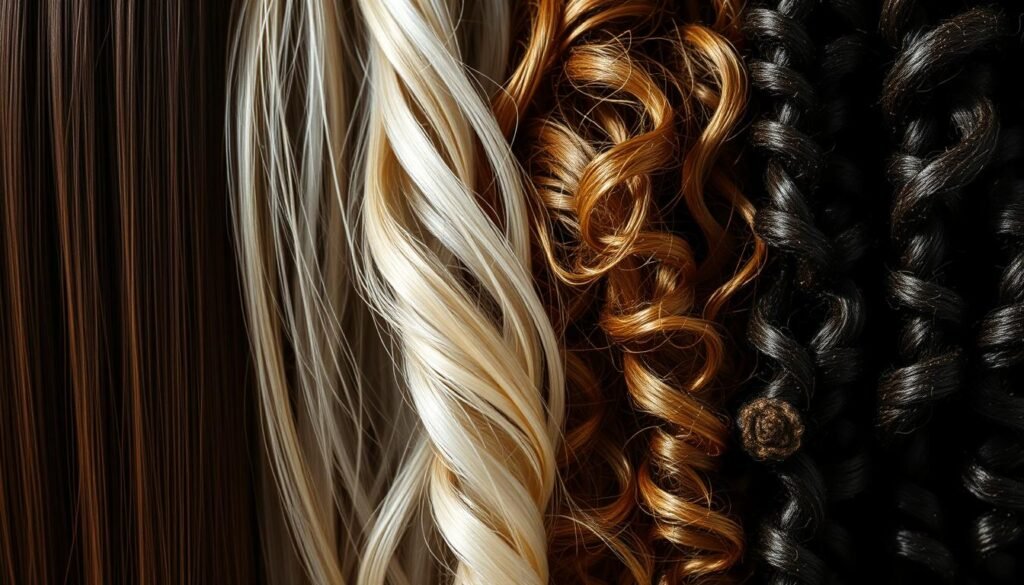
| Hair Type | Characteristics | Recommended Products |
|---|---|---|
| Straight Hair | Fine, smooth texture with little wave or curl | Volumizing shampoos and conditioners ($49.99 – $80.00) |
| Wavy Hair | Soft, gentle waves with some body | Moisturizing shampoos and conditioners ($36.00 – $48.00) |
| Curly Hair | Distinct, defined curls or coils | Curl-enhancing shampoos and conditioners ($88.50 – $127.00) |
| Coily Hair | Tight, springy curls or coils | Deeply hydrating shampoos and conditioners ($171.50 – $285.75) |
Ingredients to Look For
When selecting a shampoo and conditioner, it’s crucial to pay attention to the ingredients. Opt for formulas that contain nourishing natural ingredients, are gentle, and cater to your specific hair type and concerns. Look for shampoos and conditioners that are sulfate-free and paraben-free, as these harsh chemicals can strip your hair of its natural oils and potentially cause irritation.
Nourishing Oils and Extracts
Incorporate natural ingredients like argan oil, coconut oil, and jojoba oil into your hair care routine. These hydrating ingredients help to lock in moisture, smooth the cuticle, and leave your hair soft and manageable. Aloe vera and shea butter are also excellent choices for their nourishing and soothing properties.
Sulfate and Paraben-Free Choices
Steer clear of harsh sulfates and parabens that can strip your hair and scalp of their natural oils. Instead, look for gentle surfactants like sodium coco-sulfate, coco-glucoside, and decyl glucoside that provide Effective cleansing without compromising your hair’s health.
Essential Proteins for Strength
Incorporate protein-based ingredients like keratin and amino acids into your hair care routine. These strengthening ingredients help to rebuild and fortify your hair, leaving it stronger, more resilient, and less prone to breakage.
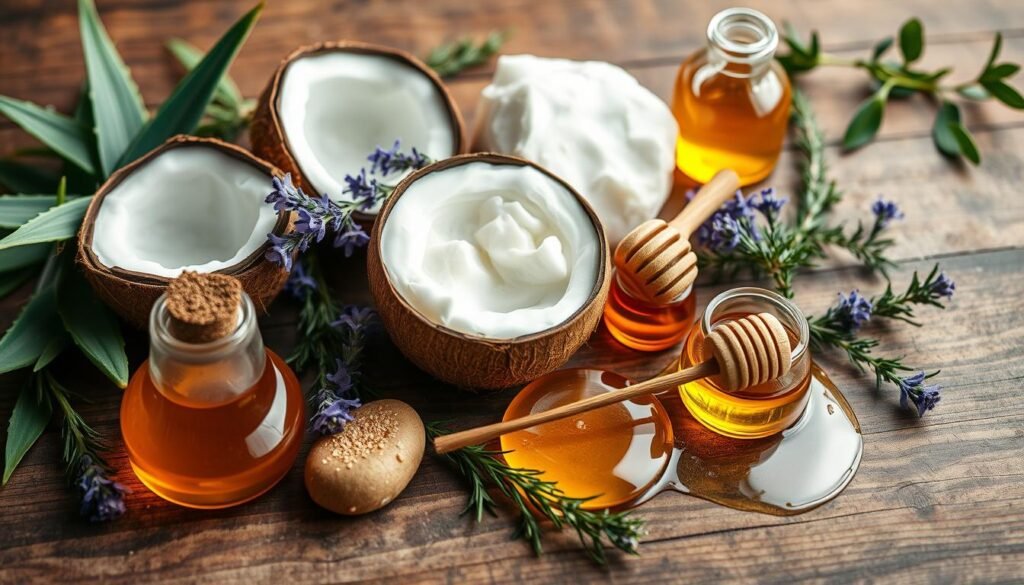
“Choosing the right shampoo and conditioner can make a significant difference in the health and appearance of your hair.”
The Role of Scalp Health
Maintaining a healthy scalp is crucial for the overall health and appearance of your hair. Common scalp issues, such as dandruff, dryness, and oiliness, can significantly impact the condition of your locks. Understanding the importance of scalp pH balance and how to address sensitive scalp concerns can help you choose the right shampoo and conditioner for your specific needs.
Common Scalp Issues
Dandruff, a common scalp condition, is often caused by an overgrowth of a yeast-like fungus called Malassezia. This fungus thrives in an oily scalp environment, leading to the formation of flaky, white or yellow scales. Addressing dandruff with targeted ingredients, such as tea tree oil and zinc pyrithione, can help restore a balanced scalp.
Dry, irritated, or sensitive scalps can also be a challenge, leading to itchiness, redness, and discomfort. Harsh sulfates found in conventional shampoos can strip away natural oils and exacerbate these issues. Opting for sulfate-free, hypoallergenic products can provide a gentler cleansing experience for sensitive scalps.
Importance of pH Balance
The ideal pH range for a healthy scalp and hair is slightly acidic, typically between 4.5 and 5.5. This slightly acidic environment helps maintain the scalp’s natural protective barrier and prevent the growth of harmful bacteria or fungi. Choosing products that help maintain this optimal pH balance can promote a healthier, more resilient scalp.
How to Choose for Sensitive Scalps
For individuals with sensitive scalps, it’s essential to select shampoos and conditioners that are free from common irritants, such as fragrances, sulfates, and harsh chemicals. Look for hypoallergenic formulas that are gentle and soothing, containing nourishing ingredients like aloe vera and peppermint. Consulting a trichologist, a specialist in hair and scalp health, can also help identify and address specific scalp concerns.
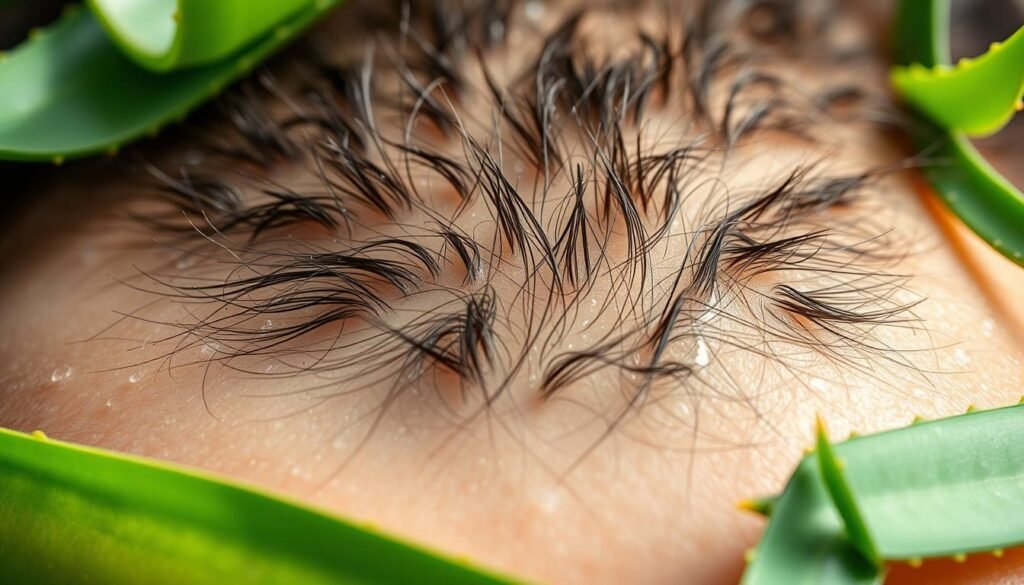
“Maintaining a healthy scalp is the foundation for beautiful, vibrant hair.”
Hair Concerns and Solutions
Maintaining healthy, vibrant hair requires addressing specific concerns and selecting the right products. Whether you have color-treated tresses, dry and damaged locks, or oily hair with dandruff, there are targeted solutions to revitalize your mane.
Color-Treated Hair
For those who enjoy the versatility of color-treated hair, it’s essential to use sulfate-free shampoos and conditioners that help protect the vibrancy of your hue. Look for formulas infused with color protection ingredients like UV filters and antioxidants to prevent fading and brassiness.
Dry and Damaged Hair
If your hair is feeling parched and brittle, seek out moisturizing and hair damage repair products containing nourishing oils and proteins like keratin. These strengthening components can help mend split ends and restore the hair’s natural luster.
Oily Hair and Dandruff Solutions
Individuals with oily hair control and dandruff treatment needs can benefit from clarifying shampoos that effectively remove excess sebum and flakes. Look for formulas infused with active ingredients like zinc pyrithione or salicylic acid to address the root cause of these common concerns.
By addressing your specific hair challenges with targeted products, you can achieve the healthy, vibrant locks you desire. Remember to consult with hair care professionals for personalized recommendations to ensure you find the perfect solutions for your unique tresses.
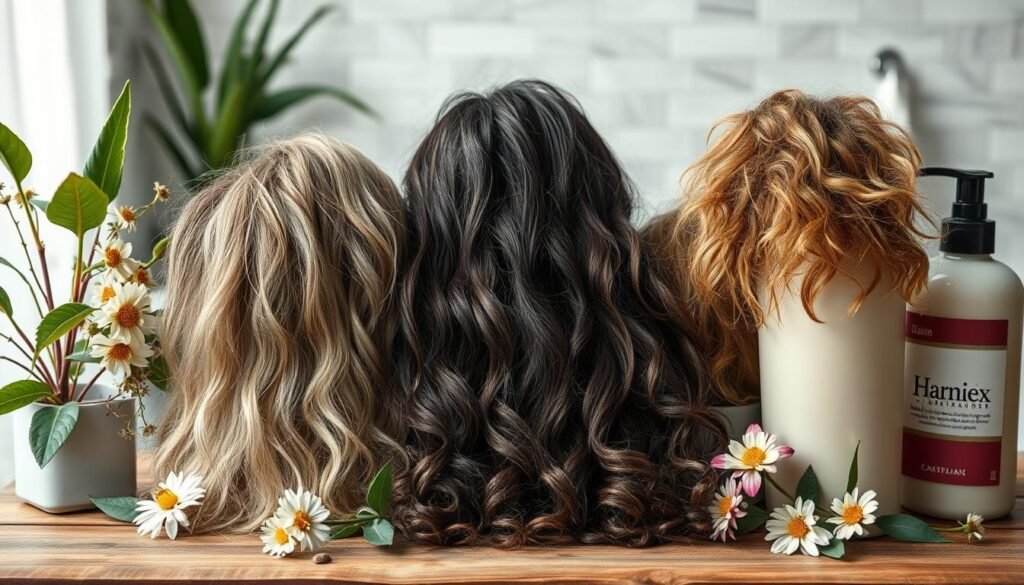
| Hair Concern | Recommended Ingredients | Suggested Products |
|---|---|---|
| Color-Treated Hair | UV Filters, Antioxidants | L’Oreal, Pureology |
| Dry and Damaged Hair | Keratin, Argan Oil, Coconut Oil | Redken, Wella |
| Oily Hair and Dandruff | Zinc Pyrithione, Salicylic Acid | Goldwell, Head & Shoulders |
The Influence of Lifestyle Factors
Your daily activities and environmental factors can have a significant impact on your hair care needs. Recognizing how your lifestyle affects your tresses is crucial when selecting the right shampoo and conditioner.
Daily Activities and Hair Care
If you’re an active individual who frequently exercises, you may benefit from a clarifying shampoo that can effectively remove sweat, oil, and product buildup from your scalp and hair. Swimmers, on the other hand, should choose products that can effectively remove chlorine and other pool chemicals that can dry out and damage hair.
Environmental Impact on Hair
For those living in highly polluted areas, using a shampoo with strong cleansing properties can help remove environmental contaminants that can cling to your hair. Lifestyle factors like exposure to pollution and harsh weather conditions can take a toll on hair health, making it crucial to select products that offer protection and nourishment.
Seasonal Changes to Consider
- In the winter, when the air is drier, you may need to switch to a more moisturizing shampoo and conditioner to prevent your hair from becoming brittle and prone to breakage.
- During the summer, when your hair is exposed to the sun’s rays and salt water from swimming, you may want to use a shampoo and conditioner formulated to provide extra hydration and UV protection.
By understanding how your daily activities, environmental factors, and seasonal changes affect your hair, you can make informed decisions when choosing the right shampoo and conditioner to meet your specific needs.

“Proper hair care products can contribute to maintaining robust hair health, strength, and vitality in the long run.”
Choosing Products for Styling
When it comes to styling your hair, the right shampoo and conditioner can make a significant difference. From heat protection to enhancing curls or boosting volume, the products you choose should cater to your specific hair needs and desired look.
Shampoos and Conditioners for Heat Protection
If you frequently use heat styling tools like blow dryers, straighteners, or curling irons, it’s crucial to invest in shampoos and conditioners that offer heat protection. These formulas often contain ingredients like silicones, ceramides, or thermal-activated polymers that create a barrier, shielding your strands from the damaging effects of high temperatures.
Products for Curly vs. Straight Hair
Curly and straight hair types have vastly different needs when it comes to styling. Curly hair typically benefits from moisturizing, frizz-reducing products that help define and enhance the natural curl pattern. On the other hand, straight hair may require lightweight, volumizing formulas to add body and lift without weighing the hair down.
Volumizing vs. Smoothing Formulas
For those seeking to boost volume, look for shampoos and conditioners that contain protein-rich ingredients like keratin or amino acids. These weightless, volumizing formulas can help create the illusion of fuller, thicker hair. Conversely, smoothing products often incorporate natural oils and silicones to tame frizz, add shine, and create a sleek, polished look.
Regardless of your hair type or styling goals, understanding the specific benefits of various shampoo and conditioner formulas can help you make informed choices and achieve the desired results.
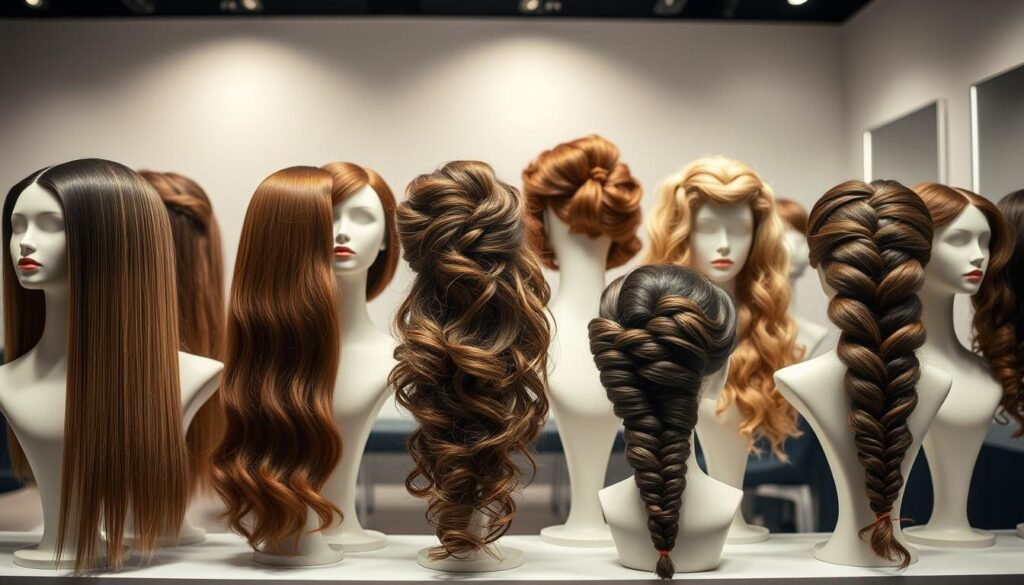
“The right hair care products can transform your styling routine and unlock the full potential of your locks.”
How to Test New Products
Trying out new hair products can be both exciting and daunting. Before committing to a purchase, it’s essential to ensure the product is a good fit for your hair type and won’t cause any unwanted reactions. By taking the time to properly test new hair products, you can avoid potential disappointments and safeguard the health of your tresses.
Patch Testing for Allergies
The first and most crucial step when introducing a new hair product is to conduct a patch test. Apply a small amount of the product behind your ear or on your inner arm and observe the area for any signs of irritation, redness, or allergic response over the next 24-48 hours. This simple step can help you identify if your scalp or skin is sensitive to any of the ingredients in the formula, preventing a potential allergic reaction down the line.
Sampling Travel-Size Products
Whenever possible, opt for travel-size or sample versions of new hair products before committing to a full-size purchase. This allows you to test the product’s effectiveness without a significant financial investment. Look for travel kits or trial sizes that let you experience the product’s performance on your hair over several washes, giving you a better sense of how it will work for your unique hair needs.
Observing Results Over Time
Patience is key when evaluating the impact of a new hair product. It can take several weeks for your hair to fully adjust to a new formula, so be sure to observe any changes in your hair’s texture, shine, and scalp condition over an extended period. Keep a hair care journal to track your observations and ensure you’re making an informed decision about the product’s long-term effectiveness.
By following these simple steps, you can confidently test new hair products and find the ones that truly work best for your individual hair needs. With a little time and care, you can ensure your hair remains healthy and happy, no matter the latest trend or product on the market.

The Importance of Product Compatibility
Achieving healthy, vibrant hair goes beyond just selecting the right shampoo and conditioner – it’s about finding products that work seamlessly together. Pairing compatible shampoos and conditioners can enhance the overall effectiveness of your hair care routine, ensuring your tresses receive the nourishment and protection they need.
Pairing Shampoos and Conditioners
When it comes to shampoo and conditioner, the adage “better together” holds true. Brands design their hair care lines with complementary formulas that work in harmony to address your specific hair type and concerns. By using a shampoo and conditioner from the same line, you can ensure the ingredients work in synergy to deliver optimal results.
Using a Complete Hair Care Line
Going beyond just shampoo and conditioner, utilizing a complete hair care line can further enhance product compatibility and targeted results. From styling products to Hair Masks and treatments, using a full range of products from a single brand can provide a cohesive approach to your hair care routine.
Mixing Brands: pros and Cons
While mixing and matching hair care products from different brands can allow for customization, it’s essential to consider the potential drawbacks. Ingredient compatibility is crucial, as conflicting formulas may lead to suboptimal performance or even unintended consequences, such as dryness or irritation. Before experimenting with brand mixing, research the products thoroughly and consider the potential risks and benefits.
Ultimately, the key to healthy, beautiful hair lies in finding products that work in harmony with your individual hair type and needs. By prioritizing product compatibility, you can unlock the full potential of your hair care routine and achieve the lustrous, manageable locks you’ve been longing for.
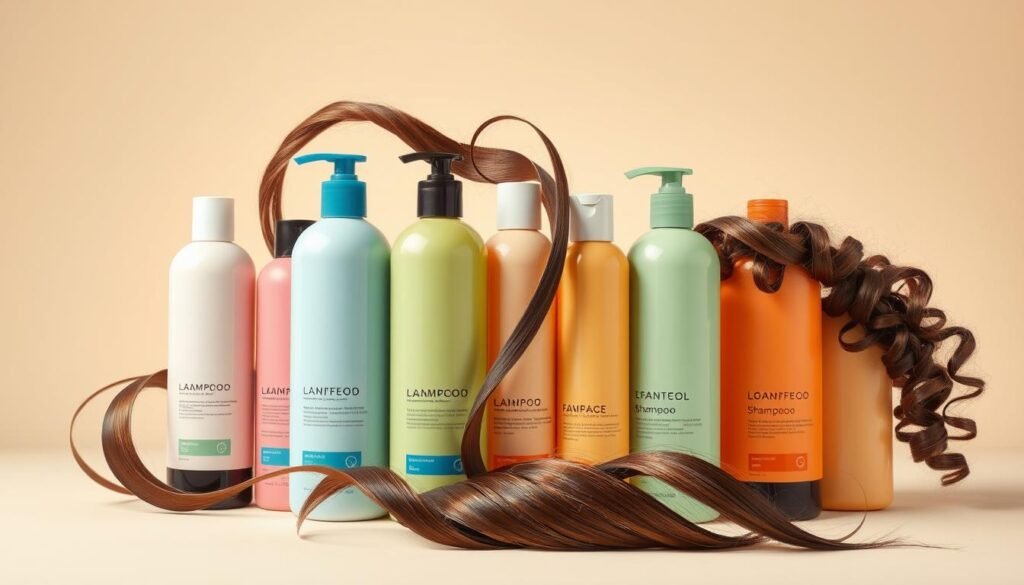
DIY vs. Commercial Products
When it comes to hair care, the choice between homemade DIY hair care remedies and commercial hair products can be a conundrum. While DIY hair care offers a natural and customizable approach, commercial hair products often boast precise formulations backed by scientific research. As you navigate this decision, it’s essential to consider the benefits of homemade hair care, explore the popular store-bought brands, and evaluate the effectiveness of each option.
Benefits of Homemade Hair Care
One of the primary advantages of DIY hair care is the ability to tailor your hair products to your specific needs. By using Natural Hair remedies like essential oils, herbs, and fruits, you can create custom hair care solutions that address your unique hair type and concerns. This personalized approach can be particularly beneficial for individuals with sensitive scalps or specific hair challenges.
Popular Store-Bought Brands
On the other hand, commercial hair products often boast the expertise of experienced hair care professionals and the resources to conduct extensive research and development. Renowned brands like Redken, Aveda, Ouidad, and SheaMoisture have built a reputation for offering high-quality, targeted solutions for various hair types and concerns. These store-bought brands can provide a more consistent and reliable product effectiveness compared to homemade alternatives.
Evaluating Effectiveness
When assessing the effectiveness of DIY hair care versus commercial hair products, it’s crucial to consider factors such as ingredient quality, concentration, and overall results. While homemade hair care may offer a more natural approach, commercial hair products often benefit from rigorous testing and formulation expertise. Ultimately, the most Effective solution will depend on your individual hair needs and preferences.
As you navigate the world of hair care, explore the possibilities offered by both DIY hair care and commercial hair products. By understanding the benefits of homemade hair care, familiarizing yourself with popular store-bought brands, and carefully evaluating the effectiveness of each option, you can make an informed decision that helps you achieve the healthy, beautiful hair you desire.
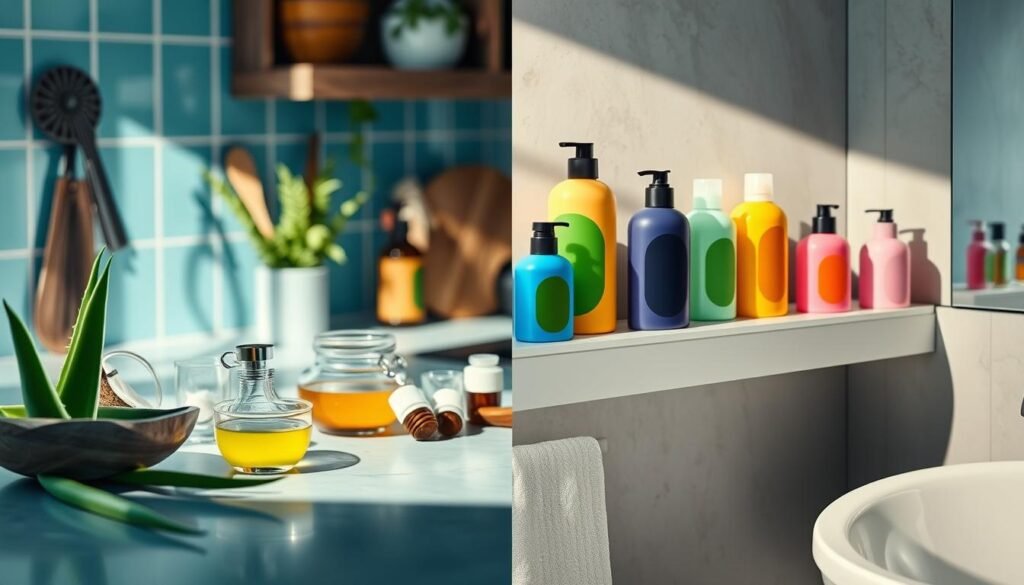
“the best hair care routine is the one that works best for your individual hair type and needs, whether that’s a DIY approach or a high-end commercial product line.”
Pricing and Quality Considerations
When it comes to hair care, the age-old debate of “you get what you pay for” doesn’t always hold true. While high-end hair product pricing may suggest superior quality, drugstore options can often provide excellent value for money. The key is understanding the factors that contribute to the cost of a hair product and how to find the best fit for your budget and hair care needs.
Understanding Product Cost
The cost of a hair care product is influenced by several factors, including the quality and concentration of the ingredients, the manufacturing process, and the brand’s reputation. High-end hair care products may use more premium, nourishing ingredients like argan oil, shea butter, or keratin, which can drive up the price. Drugstore hair products, on the other hand, may use more affordable ingredients but still deliver effective results.
High-End vs. Drugstore Options
When choosing between high-end hair care and drugstore hair products, consider your specific hair type, concerns, and desired outcomes. High-end brands often offer more concentrated formulas, targeted solutions, and innovative technologies that may provide exceptional results. Drugstore options, however, can be an excellent choice for those on a tighter budget, as they can still deliver quality hair care without breaking the bank.
How to Get The Best Value
- Look for sales, bulk purchases, or subscription services to save money on hair product pricing.
- Compare ingredient lists and reviews to ensure you’re getting the best value for money.
- Consult with hair care professionals, such as stylists or dermatologists, for personalized recommendations on the most suitable and cost-effective products for your hair type and concerns.
- Be willing to experiment with different brands and formulas to find the ones that work best for your hair, without sacrificing quality or exceeding your budget.
By balancing your budget with your hair care needs, you can find the right mix of high-end hair care and drugstore hair products to achieve healthy, beautiful hair without breaking the bank.
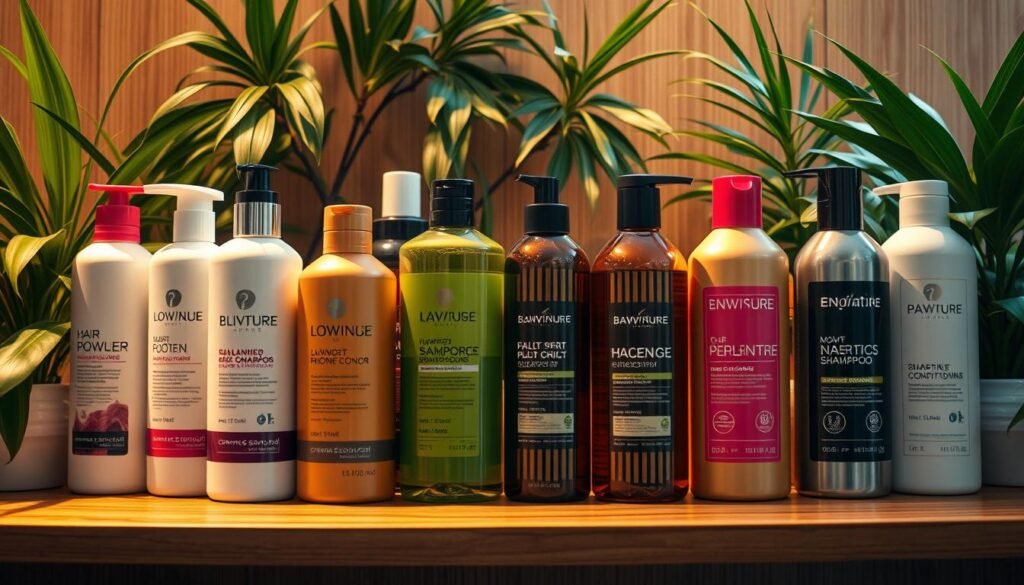
Creating a Hair Care Routine
Crafting an effective hair care routine is essential for maintaining healthy, vibrant locks. The frequency of washing your hair should be tailored to your individual hair type and lifestyle. Generally, it’s recommended to wash hair every 3 to 4 days using a moisturizing shampoo, as this helps balance oil production and prevent over-drying.
Frequency of Washing
Oily hair may require more frequent washing, perhaps daily, while dry or damaged hair benefits from less frequent cleansing to retain essential oils. It’s essential to strike the right balance to keep your scalp and strands in optimal condition.
Conditioning Techniques
When applying conditioner, focus on the mid-lengths and ends of your hair, avoiding the scalp area. Leave-in conditioners can provide an extra boost of hydration, particularly for those with dry or coarse hair textures. Gently comb through the conditioner to ensure even distribution and smooth detangling.
Integrating Treatments and Masks
Incorporate weekly hair treatments or Masks into your routine for intensive nourishment and repair. Depending on your hair’s needs, these can range from deeply hydrating masks to targeted treatments for issues like frizz, color preservation, or strengthening. Follow the product instructions for optimal results, whether that’s a short 5-7 minute rinse or an overnight, leave-in application.
FAQ
What factors should I consider when choosing the right shampoo and conditioner?
Key factors to consider include your hair type, scalp condition, lifestyle, and environmental factors. Understanding your hair characteristics and product ingredients is essential for making informed decisions about your hair care routine.
How do I identify my hair type and scalp condition?
Hair types include straight, wavy, curly, and coily, with varying thickness and porosity. Scalp types can be oily, dry, or combination. Recognizing these factors helps you select appropriate hair care products.
What beneficial ingredients should I look for in shampoos and conditioners?
Beneficial ingredients include natural oils (argan, coconut, jojoba), aloe vera, shea butter for hydration, and proteins like keratin for strengthening. Sulfate-free and paraben-free options are gentler on hair and scalp.
Why is scalp health important for overall hair health?
Scalp health is crucial for healthy hair growth and appearance. Common issues include dandruff, dryness, and oiliness. Maintaining the ideal pH level and using products tailored to your scalp’s needs can promote better hair health.
How can I address specific hair concerns like color-treated, dry, or oily hair?
For color-treated hair, look for sulfate-free, color-protecting products. Dry and damaged hair benefits from moisturizing and repairing ingredients, while oily hair responds well to clarifying shampoos and lightweight conditioners. Medicated shampoos can help address dandruff.
How do lifestyle and environmental factors affect my hair care needs?
Factors like exercise frequency, pollution exposure, and seasonal changes can impact hair care requirements. Swimmers may need products that remove chlorine buildup, while those in polluted areas may benefit from clarifying shampoos.
What should I consider when choosing products for heat styling or specific hairstyles?
For heat styling, look for shampoos and conditioners with heat protection properties. Curly hair benefits from moisturizing, frizz-reducing products, while straight hair may need lightweight, volumizing formulas.
How can I test new hair care products effectively?
Perform a patch test to check for allergies, and use travel-size or sample products to test effectiveness without a large investment. Observe results over several weeks and keep a hair care journal to track product effectiveness.
Why is it important to use compatible shampoos and conditioners?
Using a complete hair care line ensures product compatibility and targeted results. Mixing brands can allow for customization but may lead to conflicting ingredients. Consider the benefits of sticking to one brand versus mixing products from different lines.
How do DIY and commercial hair care products compare?
DIY hair care can offer natural, customizable options, while commercial formulations may provide more precision. Popular store-bought brands cater to specific hair types. Evaluate effectiveness based on ingredient quality, concentration, and overall results.
How can I balance product cost with quality and effectiveness?
Product cost doesn’t always correlate with quality. High-end brands may offer more concentrated formulas or unique ingredients, while drugstore options can provide good value. Consider factors like ingredient quality, concentration, and brand reputation when assessing price.
How do I create an effective hair care routine?
Determine optimal washing frequency based on hair type and lifestyle. Apply conditioner primarily to mid-lengths and ends, and integrate weekly treatments or masks for intensive care. Tailor your routine to your hair’s specific needs, adjusting as necessary based on results and seasonal changes.
